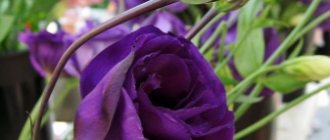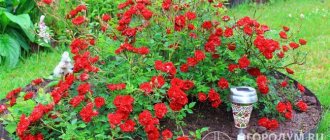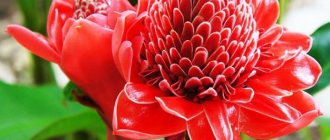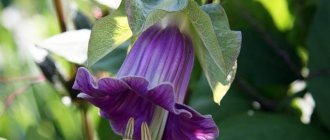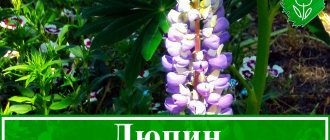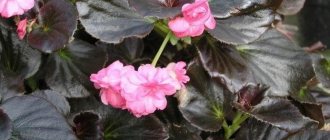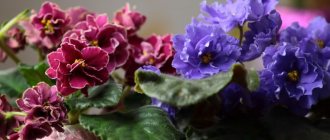Modern supermarkets offer customers a lot of vegetables and fruits not only from the Russian expanses, but also brought from the other side of the world. During transportation, fruits lose useful substances, and people want something fresh.
The same can be said about ginger root, which looks unattractive on the counter. How to grow ginger at home interests many avid gardeners and gardeners.
How to choose ginger root for planting
When purchasing ginger, make sure that it is not wrinkled, soft, or moldy.
The ginger you are going to use should be firm and have green shoots that look a lot like horns.
If the ginger root has multiple shoots, the root can be cut and placed in different pots to create multiple plants.
It is advisable to buy ginger in a store that sells organic products, since in supermarkets, as a rule, it is sprayed with a growth inhibitor to slow down the germination process, and ginger can also be treated with pesticides and fungicides.
While this doesn't mean you can't grow supermarket ginger, there's still a chance it will grow.
If there are no green shoots on the root yet, but there are already swollen buds, you can also buy this kind of ginger ; it will germinate in the soil.
Suitable varieties
Depending on where and under what conditions ginger is grown, there are different varieties and types of plants, each of which has its own unique characteristics.
At home
Bengal (white)
It undergoes multi-level processing and is considered the highest grade and most expensive. It has a fairly mild taste.
Barbadian (black)
It has a richer and more pungent taste than its white counterpart. It is processed by boiling or scalding; the top layer is not removed.
Pharmacy
The most widely known type of ginger, most often grown at home. It has a pleasant aroma and spicy taste. Used for the treatment and prevention of a number of diseases, as well as in cooking .
On the street
In addition to the varieties listed above, the following types of ginger can also be grown in garden conditions.
Chinese
Another name for it is “krachai” . It has a delicate, non-burning taste, somewhat reminiscent of citrus fruits.
African
It has the darkest color compared to the others. The taste is quite bitter.
How to grow ginger at home
As the ginger grows, more and more rhizomes form, giving you a new harvest of ginger.
To remove pesticides from ginger, soak it in water overnight before planting.
Growing temperature
The optimal temperature for growing ginger at home is 20-21 degrees, but less than 10 degrees.
Both direct sunlight for many hours and low temperatures can impair its growth.
Avoid placing the plant near air conditioners or radiators.
What kind of pot do you need?
The pot in which the ginger will be planted, the width of the pot should be at least 2 times larger than the length of the root you are planting.
Ginger grows in width underground , and the above-ground part grows up to 60-90 cm in height.
The depth of the pot should be about 40 cm.
You need to put drainage on the bottom of the pot , it could be expanded clay, pebbles or something similar.
Drainage is needed to prevent waterlogging.
What kind of soil is needed?
Ginger prefers fertile soil.
Fill the pot with 1 part compost or humus and 3 parts soil.
If you don't have good soil, or if you grow ginger in regular garden soil, it will need to be fertilized regularly.
For fertilizer, it is advisable to use organic fertilizers, such as vermicompost, nettle fertilizer, wood ash, etc.
Preparing ginger for planting
Now you need to prepare the ginger for planting.
If it has several sprouts or swollen buds, cut it so that there is one or more buds on each piece.
More than one bud on a ginger gives more guarantee that the root will sprout.
It is advisable to plant each such piece in a separate pot if the pot is small in width.
Planting ginger in the soil
When planting, the rhizome is placed horizontally in the soil, leaving shoots on the surface.
How to water ginger?
At the very beginning, after planting the ginger root, it is recommended to mix water for irrigation with vermicompost (earthworm humus).
It is best to water little and often , making sure the soil is always moist but never becomes swampy.
Never pour water directly on the root ; water around the root.
If the soil does become waterlogged, the ginger needs to be transplanted into another pot with new soil so that the roots do not rot.
Ginger care
After planting, the soil should be kept slightly moist.
At first, the plant should be in a place with a small amount of light.
You need to water so that the water does not fall on the root itself, but moistens the soil around it.
When to harvest?
3-4 months after the ginger begins to grow, the first harvest can be harvested.
But after 3-4 months, the ginger will be at the stage of milky ripeness.
But in general, the readiness of the harvest is determined by the leaves; when they turn yellowish , it is time to harvest.
It takes approximately 10 months from planting until the leaves turn yellow.
To do this, carefully examine the ground with your hand until you find the ginger roots, take as much as you need and cover everything back with soil so that the ginger can continue to grow.
Transplanting into open ground or greenhouse: the difference
The climatic conditions of our country are not suitable for the crop; it is grown in open ground only as an annual. Transplantation of seedlings into open ground is carried out in May, when the soil is sufficiently warmed up. Our winters, even in the southern regions, are too harsh. The solution is to grow the crop in a pot for the summer, take it out to the garden and dig it in along with the container, and put it back into the house for the winter.
Many dachas today have heated greenhouses for year-round cultivation of vegetables and herbs. There is a huge advantage here: you can regulate temperature and humidity, creating the conditions necessary for the culture.
In a greenhouse or garden bed, you need to prepare the soil; the following components, taken in equal parts, are suitable:
- turf land;
- leaf soil;
- sand;
- peat.
The soil must be disinfected: you can spill boiling water or a solution of potassium permanganate. Further care is the same as described above: watering, fertilizing and soil care.
How to separate ginger roots?
Ginger is divided in order to obtain new plants or simply to separate old rhizomes from new ones and increase the amount of harvest.
Root separation is carried out when the plant is at least 3 years old and when the pot is already filled with roots so that they do not have enough space to develop.
Another sign that it is time to separate the roots is the appearance of ginger roots above the surface of the soil.
To separate the roots, dig them carefully without damaging them.
Use a sharp knife to cut off individual rhizomes.
Check each root for damage, rot or pests.
The roots should not be damaged.
As a result, you need to select healthy roots that have at least a few eyes or growth nodes.
They will be a source of new plant growth.
After separating the ginger, they should be planted in the soil immediately, and some of them can be set aside for food use.
Beneficial properties and harm
Ginger is a storehouse of unique taste and medicinal properties. The plant has an advantage not only among other spices and herbs, but also in many ways is superior to medicinal herbs.
From a medical point of view, ginger has the following beneficial properties:
- relieves pain, eliminates inflammation, has an antispasmodic effect, disinfects;
- expels toxins, bile;
- tones;
- destroys free radicals;
- has a sedative effect on the central nervous system;
- increases immune defense;
- effective against internal parasites;
- has a beneficial effect on the gastrointestinal tract, improves appetite, stimulates metabolism, recommended for use in cases of indigestion, belching, flatulence, poisoning by mushrooms and animal poisons;
- recommended for colds, flu, sinusitis, cough;
- effective for allergies, skin diseases, bronchial asthma;
- helps with colic of various kinds (bilious, renal, intestinal);
- reduces blood cholesterol levels;
- reduces pain in joint diseases, rheumatism, sprains, arthrosis and arthritis;
- the peel of the product has a diuretic effect;
- relieves fatigue;
- ginger is used for jaundice and paralysis;
- the plant has a beneficial effect on the functioning of the thyroid gland;
- strengthens blood vessels, lowers blood pressure;
- stimulates brain function;
- slows down the aging process;
- has a positive effect on reproductive function;
- helps cope with seasickness;
- Ginger root improves oral health.
On a note! Ginger improves the quality of food, promotes its better absorption, and gives it a pleasant, slightly spicy taste. The oil of this plant is actively used in cosmetology.
Ginger can only cause harm if it is used in very large quantities or if recommendations regarding contraindications are ignored.
The product should be excluded from the diet in the following cases:
- pregnancy and lactation;
- gallstones;
- nonspecific ulcerative colitis;
- high fever;
- stomach ulcer;
- diverticulosis;
- diverticulitis;
- esophageal reflux.
Side effects from using ginger may include the following:
- diarrhea;
- nausea;
- vomit;
- allergy.
On a note! The beneficial properties of the plant are explained by the presence in its composition of essential oils, amino acids, vitamin A, C, group B, various macro- and microelements (threonine, tryptophan, phenylanine, camphene and others).
Benefits and harms
Why did the ginger leaves turn brown?
Darkening of ginger leaves may be a sign that the plant is not comfortable in its growing conditions.
One of these unfavorable conditions may be a lack of watering and the ginger lacks moisture .
Brown ginger leaves can be a sign of sunburn , and signs of sunburn can also include crispy, papery leaves.
Also, the cause of brown leaves can be a disease, after which ginger usually does not survive.
Diseased ginger roots can be recognized by dry rot; on the roots there may be: bacterial silt, soft rot and other unpleasant signs of the disease that are clearly visible.
Such a plant can no longer be saved, so they need to be disposed of.
Ginger diseases
Ginger does not have many diseases , so it will not be difficult to determine which disease your plant has.
Root nematode
With root nematode, the roots will appear cracked and slightly shrunken.
Bacterial wilt
In this disease, bacteria penetrate the vascular tissue of ginger plants and multiply until water no longer flows to the shoots and leaves.
Bacterial wilt manifests itself as symptoms of lack of water, despite adequate watering.
The leaves begin to turn yellow.
Pre-emergence care
The planted root is covered with plastic wrap with small holes and placed in a warm place. The temperature for rapid germination should not be lower than 18 degrees. Planting care involves maintaining high soil moisture and maintaining a constant temperature.
You can grow ginger on an insulated balcony, on the windowsill of a house, or in a warm greenhouse in the country. The spice belongs to tropical plants, and therefore requires non-standard conditions for germination and further growing season. It cannot withstand temperatures dropping even to 15 degrees and soil drying out. The seedling will die and will not sprout.
This is how ginger is planted in plots

